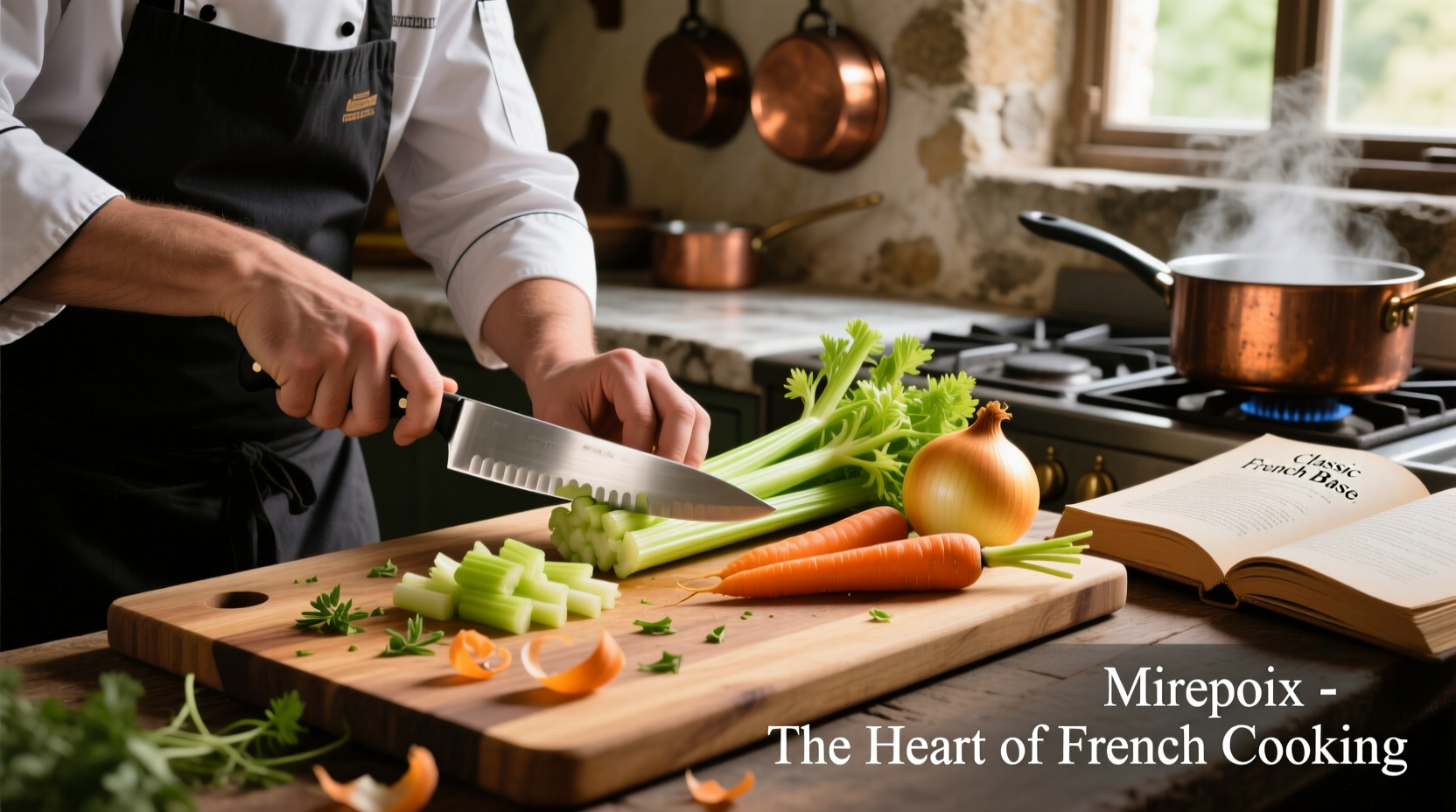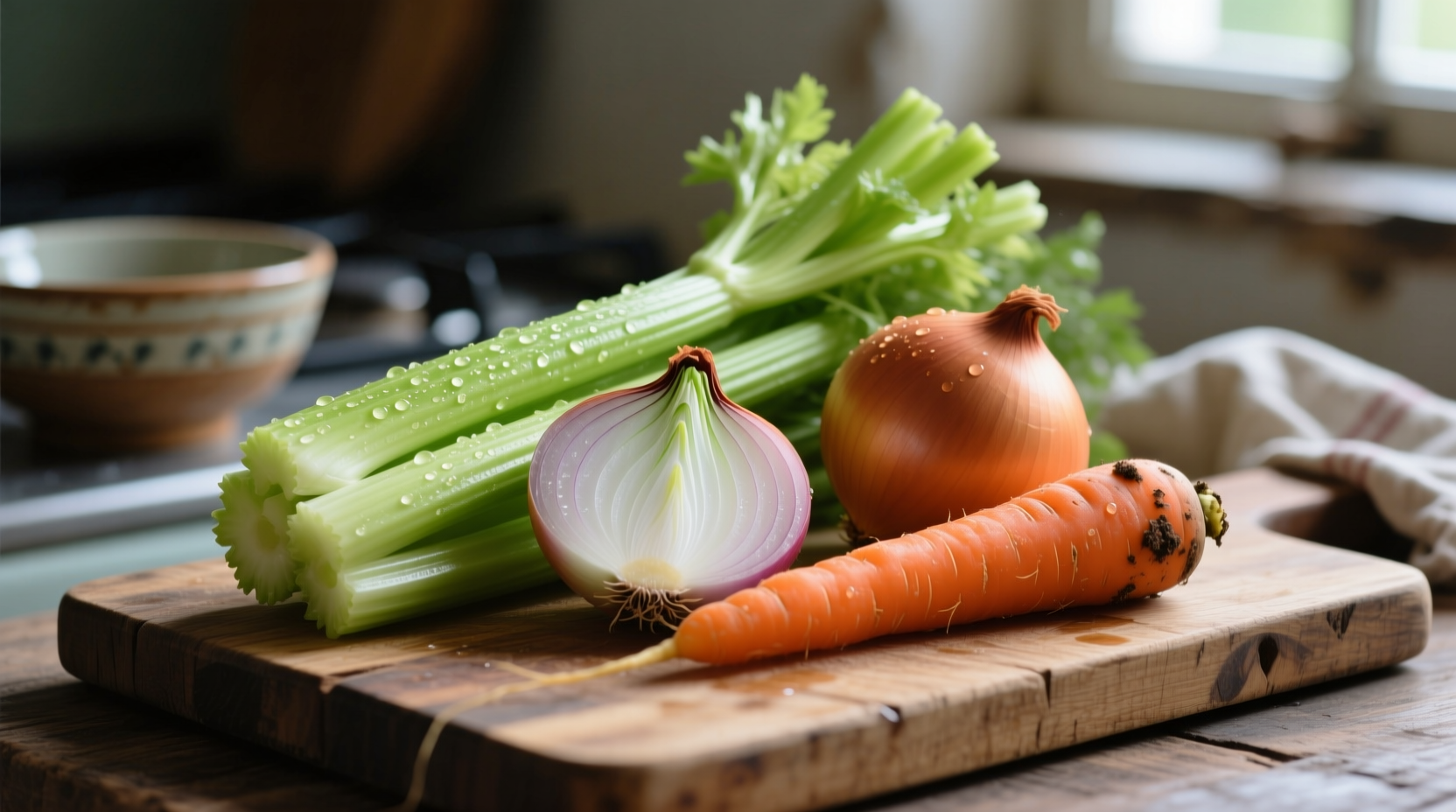Discover the perfect balance of celery, onions, and carrots for creating flavorful bases in soups, stews, and sauces. This classic French mirepoix combination (typically in a 1:1:1 ratio) forms the aromatic foundation for countless dishes, enhancing depth while maintaining vegetable integrity when properly prepared.
When you combine celery, onions, and carrots in your cooking, you're working with one of culinary history's most reliable flavor foundations. Known as mirepoix in French cuisine, this vegetable trio creates a balanced aromatic base that elevates everything from simple weeknight soups to elaborate holiday roasts. The magic happens when these three ingredients cook together—the natural sugars in carrots complement the sharpness of onions, while celery adds herbal complexity without overpowering.
Why This Vegetable Trio Works So Well
The science behind this classic combination lies in complementary flavor compounds. Onions contain sulfur compounds that create depth when caramelized, carrots contribute natural sweetness through sucrose, and celery provides phthalides that add subtle herbal notes. When cooked slowly in fat, these elements undergo the Maillard reaction, creating hundreds of new flavor compounds that form the backbone of savory dishes.
| Vegetable | Key Flavor Compounds | Optimal Cooking Time |
|---|---|---|
| Onions | Sulfur compounds, quercetin | 8-10 minutes |
| Carrots | Sucrose, beta-carotene | 10-12 minutes |
| Celery | Phthalides, polyacetylenes | 6-8 minutes |
Mastering the Perfect Ratio
While traditional French mirepoix uses equal parts (1:1:1) of each vegetable, regional variations exist based on dish requirements:
- Standard mirepoix: Equal parts onion, carrot, celery (ideal for most soups and stews)
- White mirepoix: Replace carrots with parsnips (for cream-based sauces where color matters)
- Italian soffritto: 2 parts onion, 1 part celery, 1 part carrot (more robust flavor profile)
- Cajun holy trinity: 2 parts onion, 1 part celery, no carrots (distinctive Southern flavor)
For home cooking, start with the classic 1:1:1 ratio using 1 cup of each vegetable finely diced. This creates approximately 3 cups of mirepoix—enough for 4-6 servings of soup or stew. The USDA's Food Safety and Inspection Service confirms that properly cooked mirepoix reaches safe internal temperatures while preserving optimal flavor development (fsis.usda.gov).
Preparation Techniques That Make a Difference
The way you cut these vegetables significantly impacts flavor release and texture:
- For quick-cooking dishes: Finely dice (1/8 inch) for rapid flavor infusion in sauces and quick soups
- For slow-cooked dishes: Medium dice (1/4 inch) maintains texture through long braises
- For stocks and broths: Rough chop (1/2 inch) for easy straining after extraction
Always start by cooking onions first—their higher water content helps create the cooking medium. Add carrots next since they take longer to soften, then finish with celery which cooks fastest. This sequence, documented in Escoffier's Le Guide Culinaire (1903), ensures even cooking and optimal flavor development.

When This Combination Shines (and When It Doesn't)
Understanding context boundaries helps you use this vegetable trio effectively:
- Perfect applications: Beef bourguignon, chicken soup, tomato sauce, vegetable stock, braised meats
- Limited effectiveness: Seafood dishes (overpowers delicate flavors), Asian stir-fries (different aromatic base), acidic tomato dishes (adjust ratio to 2:1:1)
- Substitutions needed: When carrots aren't available, use equal parts parsnip; for onion sensitivity, try shallots at half the quantity
The University of California's Agriculture and Natural Resources department notes that proper mirepoix preparation can increase vegetable nutrient bioavailability by up to 30% through the cooking process (ucanr.edu).
Storage Solutions for Maximum Freshness
Keep your mirepoix ingredients at peak quality with these professional techniques:
- Store whole carrots in water-filled container in refrigerator (up to 3 weeks)
- Wrap celery stalks in aluminum foil before refrigerating (extends freshness by 50%)
- Keep onions in mesh bag in cool, dark place (never refrigerate whole onions)
- Pre-cut mirepoix stays fresh 4 days when stored in airtight container with damp paper towel
For meal prep efficiency, many professional kitchens use the "mirepoix timeline" approach: prepare large batches on Sunday, store properly, and use throughout the week. This method reduces daily prep time by 15-20 minutes per meal while ensuring consistent flavor bases.
Avoid These Common Mistakes
Even experienced cooks make these errors with celery, onions, and carrots:
- Rushing the sweat stage: Cooking too high heat creates uneven browning rather than proper sweating
- Incorrect ratios: Too much carrot makes dishes overly sweet; too much celery creates medicinal notes
- Adding garlic too early: Burns easily—add in last 2 minutes of mirepoix cooking
- Using wet vegetables: Moisture prevents proper caramelization—pat dry before cooking
Remember that the ideal mirepoix should be translucent and softened but not browned—this "sweating" process typically takes 10-12 minutes over medium-low heat. Browning indicates the sugars have caramelized too much, which changes the flavor profile from aromatic to roasted.











 浙公网安备
33010002000092号
浙公网安备
33010002000092号 浙B2-20120091-4
浙B2-20120091-4